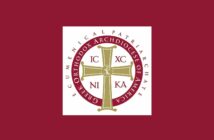
George Matsoukas, Executive Director of Orthodox Christian Laity
Source: Orthodox Christian Laity
We are entering the month of May, and we are about 9 to 12 weeks away from the National Assemblies of three different Orthodox Christian Groups in the USA. The Greek Orthodox Archdiocese (GOA) will hold its 44th Clergy-Laity Congress in Boston on July 1-5. The 19th All- American Council of the Orthodox Church in America (OCA) will take place in St. Louis on July 23-27. The 93rd Fellowship of Orthodox Christians in America (FOCA) will take place in conjunction with the All-American Council. If in fact, as Jesus Christ said, “all things are possible to the one who believes” (Mk 9:23),* these and all the other meetings that will take place this and next year by the various fragmented Orthodox jurisdictions would be taking place at the same time in the same place. They would be taking place in the National Orthodox Christian Conference Center hosted by the Assembly of Bishops. After 200 years in this geographical area, the USA, there should be a National Orthodox Christian Conference Center. Just think how much money the delegates would save by not paying exorbitant registration fees and hotel expenses. Just think of the fellowship Orthodox Christian delegates, families, young and old, would experience. Just think of the opportunities afforded to our children and grandchildren in meeting each other and sharing their diverse Orthodox Christian experiences. What a network they would develop! These meetings in our own Conference Center would enable a broader cross section of faithful people to participate and attend. Imagine the impact that truly Pan-Orthodox liturgical services, meetings and educational sessions would have on the participants. Just think how more efficiently we would be utilizing the time, talent and resources of the generous laity. I truly believe that such meetings would have a genuine and authentic impact “for the life of the world” (Jn. 6:51). * These assemblies would be living proof that all things are possible. The witness for Christ would be transformative. We would be living the Great Commission that we are called upon to live, given to us by Christ at Pentecost, which precedes these meetings.
The reality is that we will continue to witness to the Lord in our fragmented ways. The GOA meeting will continue to be a charade, for it is not a deliberative body concerned with finances and accountability and transparency. If it were such a body, it would not be dealing with the bankruptcy of the Archdiocese. Very few ideas or motions will be allowed from the floor, because the rules of engagement are convoluted, and the meeting is meant to be orchestrated. If we were working together as a unified Orthodox Christian Church, we would have learned from the crisis of finances that the OCA experienced and would be working under similar management by-laws that emerged from that crisis. The OCA’s administrative rules are more conciliar, and clergy and laity have input. The OCA Charter and By-Laws are a model for the unified governance of the Orthodox Christian Church in the USA.
The continued fragmentation of Orthodox Christianity in the USA demonstrates that our commitment to Christ is limited, and our authentic witness is impossible, as long as the fragmentation continues. The result is that what we have to offer for the life of the world is limited. When will the Assembly of Bishops become the Synod of Bishops working in a conciliar way with the laity?
George Matsoukas
OCL Executive Director
*Title Theme of GOA and OCA National Assemblies




4 Comments
Bravo! He gets it. Well said my brother in Christ.
Wow, thank God that someone else sees the fragmentation that exists and the benefit of being all ONE and has the strength to state this position. Thank you for your comments … totally agree on all points!
Christ is risen!
As one of the few or possibly only living person who can relate to the events covering the periods from SCOBA, through autocephaly, and to the present, It is time that I should speak out on the issues you have raised. What I relate will be controversial but it must be said. The concern over Orthodox fragmentation is nothing new and will honestly continue. To speak of all that took place would require a book but here are a few points. When SCOBA was first initiated, there was some desire to overcome our lack of a unified voice. That was deliberately scuttled. How can I kindly phrase what took place? Simply, administrative unity was advocated OVER eucharistic unity. Foolish and unOrthodox! Unfortunately, some of that same opinion and practice (condition) remains today.As regards to autocephaly, I was more closely involved from the side of the Moscow Patriarchate. The Ukaz (Proclamation) of Autocephaly was not simply granted to the Metropolia (now OCA) but to all the Orthodox churches in America. Hence the term Orthodox Church IN America was deliberately given. Not “of” but “in”. The OCA is to be the “nucleus” for that unified Orthodox Church (see the text). Controversial? Yes, but still true. This comes directly from conversations with Metropolitan NIKODIM (of Leningrad) representing Patriarch ALEXIS. Subsequently, everyone “dropped the ball” usually for numerous and sometimes justifiable reasons. Of course, geopolitics since has come into play as well.
Like before, there is really no honest intention for jurisdictional unification in the Americas. Maybe in another 100 or 200 years. But I do encourage further dialogue, especially by the laity. In God’s good time, miracles do happen.
sounds like porkbarrel to me. and that grinning guy looks more worldly (e.g., church politics) than spiritual